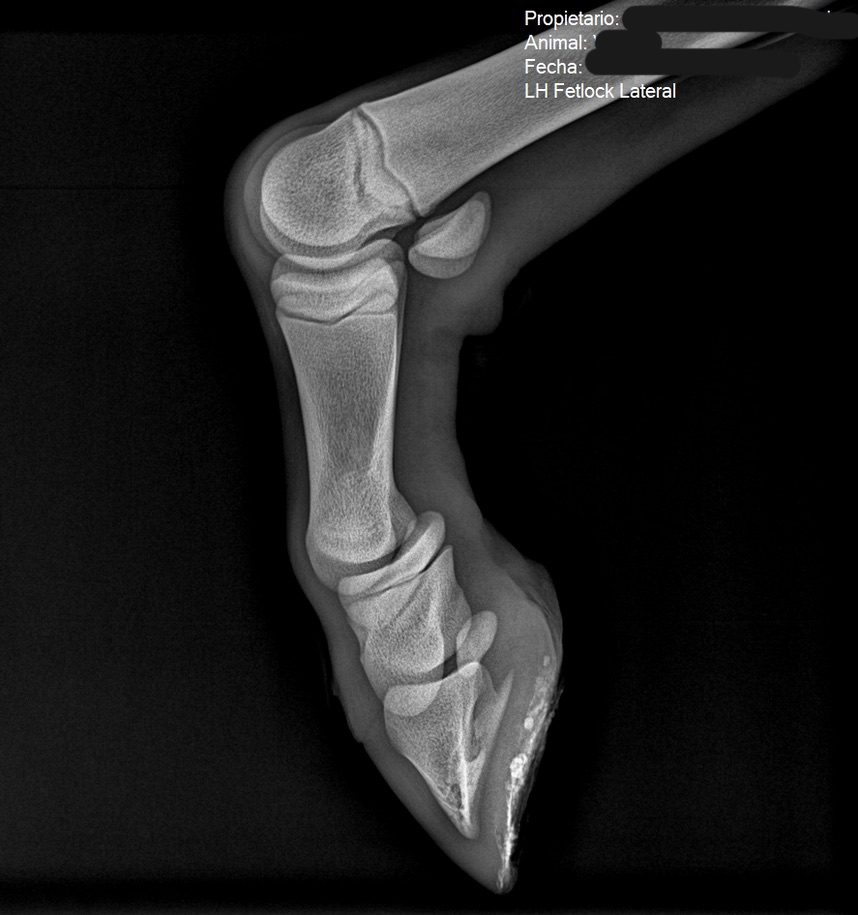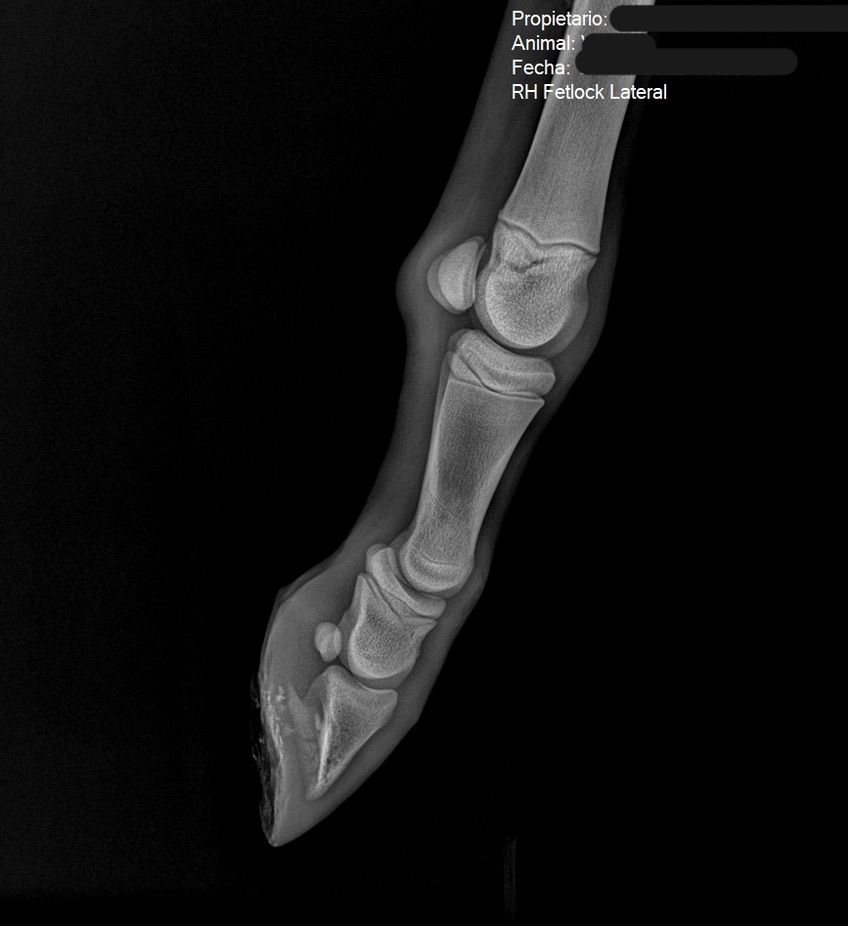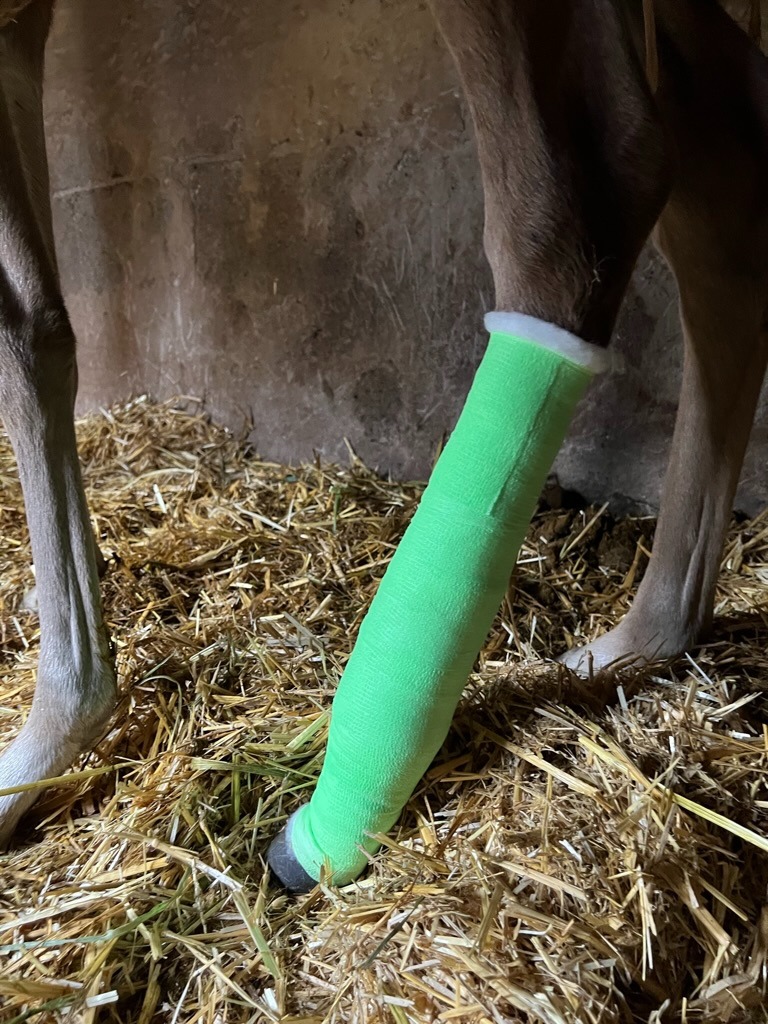It is very common for a mare’s birth to occur naturally without our intervention. We usually attend births after they occur to ensure that everything is going well for both mother and foal.
In a recent case, an owner called us to check a filly when he detected that she did not have a good hind limb. Specifically, it was an English Thoroughbred filly with the following support:
Upon observation, we confirmed that he had varus aplomb of the left foot, largely due to the lack of tone of the soft tissues involved, with particular elasticity of the extensors. Physical examination of the fetlock showed overt instability of this joint. A radiographic study confirmed subluxation of the metatarsophalangeal joint.



This lesion, together with other conformational characteristics and the size at birth, are compatible with a congenital Windswept angular deformity, and we proceeded to treat it.
First of all, a Robert Johns double advancement bandage was applied. It is a very cushioned bandage that serves to stabilise the joint and which we repeat for several days, as well as providing adequate exposure to the sun, something very important for this type of foals.



After a few days the filly improves considerably, but the varus aplomb remains. We recommend placing an acrylic with dorsolateral extension. We contacted Gonzalo, fellow farrier, Gonzalo, and carried out the orthopaedic work together.



After further treatment the filly evolved favourably and her poise is correcting itself. Success shared between owner, vet and farrier.


